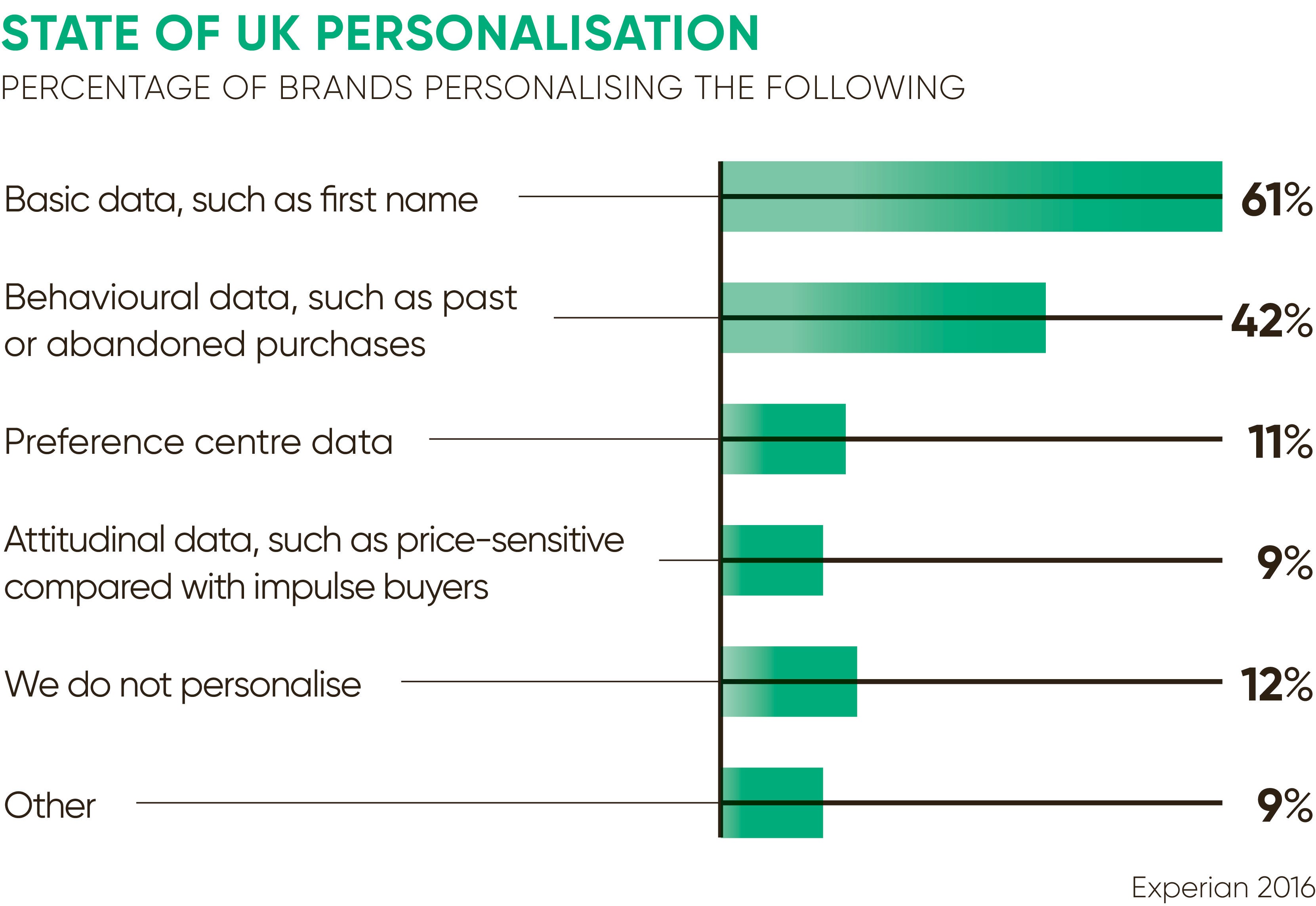 As competition in price and product has largely been eroded by wide availability via multiple channels, customer service has become evermore important.
As competition in price and product has largely been eroded by wide availability via multiple channels, customer service has become evermore important.
“And what better way to deliver a stellar customer experience than to personalise or tailor services and products,” says Gartner digital commerce research director Penny Gillespie.
“Relationships recognise value, time is not wasted, interactions are efficient and customers get the content they are most interested in. This is how personalisation makes consumers care about products, brands and services.”
A recent survey undertaken by Chartered Institute of Marketing (CIM) showed that the top two priorities for marketers in the coming year were personalisation (42 per cent) and data driven marketing (37 per cent).
“If it’s executed well, personalisation can create an upsell or cross-sell opportunity with higher conversion rates and also increase brand loyalty,” says CIM chief executive Chris Daly.
The goal, however, should be personalisation and customer experience, not increased revenues, although that will be the outcome. “The more a customer engages with you, the more likely they are to spend with you and the more likely they are to spend more with you,” says Ms Gillespie.
It is ironic that where the race to automate everything seemed to obviate the human factor, technology is now being used to personalise and humanise service. Research undertaken by Adobe and Goldsmiths, University of London shows that a consumer’s idea of a great experience is something meaningful, personal and straightforward.
“Consumers want brands to understand them, but they also want to have an empathetic relationship, where brands don’t necessarily understand some of the key issues yet respond to those in an adaptive, straightforward way,” says senior director of marketing for Adobe John Watton. “A lot of consumers want an element of serendipity – that moment of delight when something pleasantly unexpected happens.”
Who’s doing it?
There are retailers with digital displays that scan customers to understand their height and shape, and recommend clothing. The store does not need to know much about that person, but the service is instant, relevant and adaptable. LV= insurance has devised a virtual reality app to enable call centre staff to empathise with customers whose house has been flooded, so their first question is not “what is your policy number?”
Marriott International guests convey their preferences while staying at hotels or online. “We combine this with real-time contextual data recorded while guests are using our website and use it to improve the relevancy of our messages the next time we communicate with them,” says vice president of brand marketing and e-commerce in Europe Osama Hirzalla.
“A consistent, personalised, relevant experience strengthens guests’ loyalty to Marriott. They feel that Marriott understands who they are and knows what they are looking for or expecting, whether it’s in choosing a destination, a property or the amenities and services during their stay,” he says. “Adding this level of personalised insight to our digital marketing efforts has dramatically increased the return on investment of many of our programmes.”
The Marriott approach illustrates that learning on the hoof is a must. This will make artificial intelligence (AI), with its learning capacity, important and brand consultancy Soul is looking at embedding AI into the customer experience of a loyalty programme client.
It is ironic that where the race to automate everything seemed to obviate the human factor, technology is now being used to personalise and humanise service
“We are trying to work with people to personalise collection programmes, so that we understand what they are collecting for and help them get there quicker by making suggestions,” says Soul’s chief executive Mike Cullis. “If they see the value of the programme, they will become good advocates for it,” he says. AI will eventually aid that process.
Self-service is another way of gaining loyalty. Pre-order platform Preoday has been working with the Jockey Club to take the queues and hassle out of bar service at racecourses. As a result, average cash orders have gone up from £20 to £25 on the day up, increasing to £46 for pre-orders, which customers can collect and take to their table or have served. And venues can see who the high spenders are.
Powerful data
Companies now have so much information about customers that the potential for transcending boundaries appears to be, well, boundless. This is one reason the European Commission’s General Data Protection Regulation is to be introduced in 2018. It requires companies to demonstrate informed consent to use personal data for marketing purposes and gives consumers better control.
“Organisations need to take this as an opportunity to have better relationships with customers and improve trust,” says Capgemini Consulting vice president Gagandeep Gadri, who is head of customer experience and analytics.
Gartner’s Ms Gillespie says: “The privilege of personalisation is the seller’s to lose. When done well, it is a win-win, when done poorly there is the chance of regulation.”
And as Adobe’s Mr Watton points out, subjectivity plays a part – what customers welcome from a brand with which they have a good relationship is annoying from another. “There is an element of common sense,” he says. “Just because you can, doesn’t mean you should.”
And if personalisation is now about empathy and adaptive response, then the future will be concerned with reading emotional data, according to Mr Gadri. Customers who ring HSBC or TalkTalk already say “my voice is my password” to bypass labour-intensive authentication. “Just imagine if that technology understood whether or not you were in a good mood and people knew how to approach you from that,” he says.
And the next stage is communication with the wider family. “How does an organisation market to the family unit in a better way to make a connection and get a greater share of wallet? That’s where personalisation is going next,” Mr Gadri concludes.


